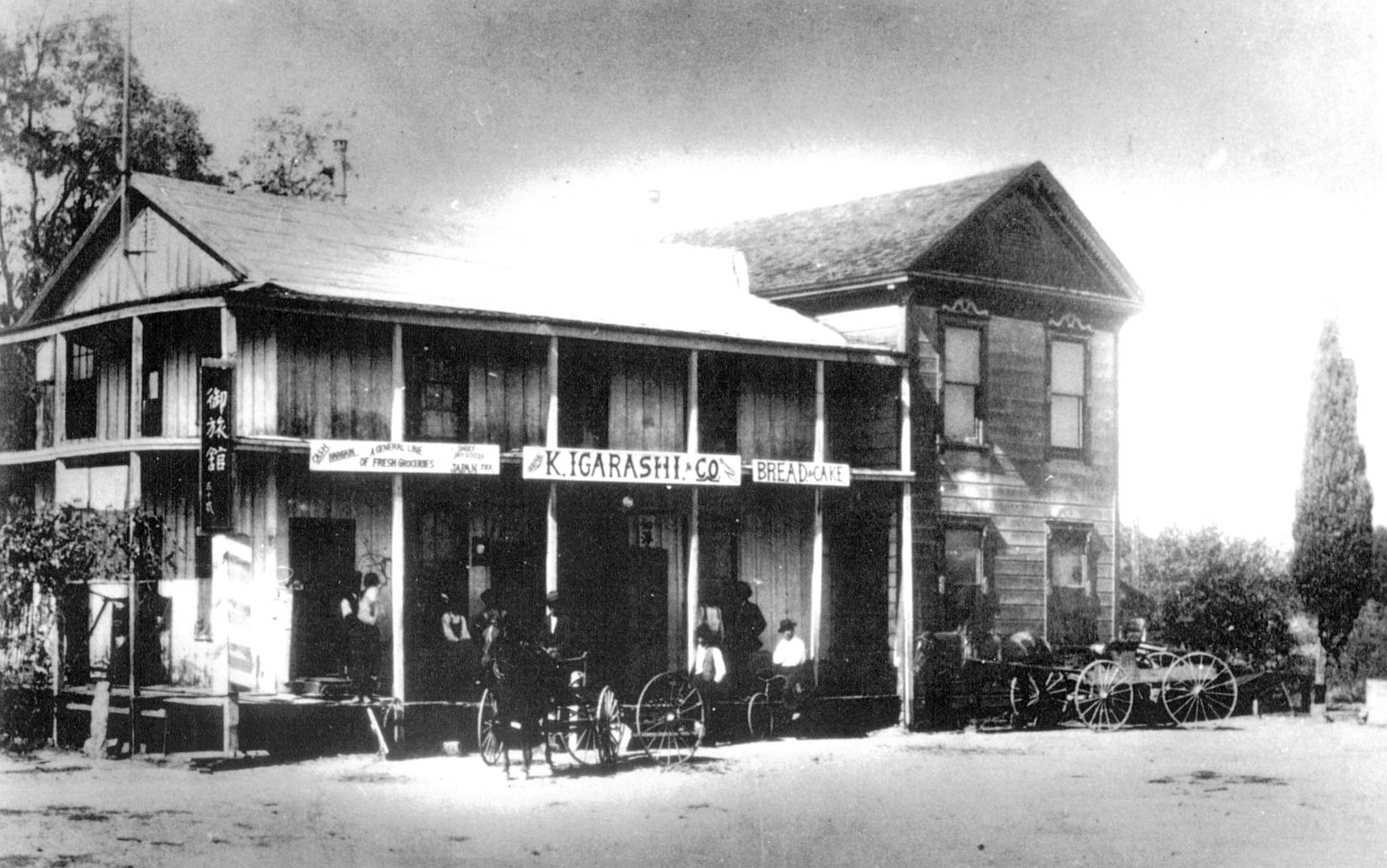LOOMIS BASIN HISTORICAL SOCIETY’S THROWBACK THURSDAY
Kanematsu Igarashi
Kanematsu Igarashi, one of Loomis’ early Japanese settlers, was born in Tainai, Niigata Prefecture, Japan, in 1867. As a young lad, he learned from his father and grandfather the trade of sauce making – koji, miso, shoyu and sake. At age 17, he entered into an arranged marriage. The marriage was not a happy one. It was dissolved two years later.
At age 19, Kanematsu left Japan, signing a seven-year servitude contract aboard a Dutch freighter. While at sea, he fell off the deck into the hold, breaking his right leg and left ankle. Because of his injuries, the ship cancelled his contract. A Hawaiian shipmate took Kanematsu to his family home to heal. Kanematsu remained in Hawaii for twelve years, working in the pineapple and sugar cane fields. He also started a small sauce-making business.
Seeking greater opportunity, Kanematsu left Hawaii in 1898. Landing in San Francisco, he gradually made his way to Sacramento and then Placer County where he worked in the fruit orchards. Within a few years, he was managing farms and recruiting Japanese workers for one of the fruit shipping firms. His social life centered around a group of Japanese people who were interested in Christianity, a religion he had been introduced to in Hawaii. He was a founding member of the Loomis Japanese Methodist Episcopal Church (today’s First United Methodist Church of Loomis).
In 1906, at age 39, Kanematsu decided he needed a family. After speaking with the pastor of the Methodist Church in Sacramento, he sent for a picture bride. She was 19 years old, a student at a Christian missionary school in Japan, and her name was Toshiko. Their marriage was long and happy, producing a family of ten children.
In 1909, Kanematsu opened a store in Loomis where he sold dry goods and groceries. He was assisted by his younger brother, Sanjiro Mayeda, who had arrived in Loomis in 1907. (Sanjiro adopted his wife’s last name of Mayeda, in the Japanese tradition of “Mukoyoshi.”) After four years in business, he sold the store.
Purchasing 20 acres south of Loomis, Kanematsu entered a new line of work – the poultry business. He built 12 chicken houses, two brooder houses, and a two-story building that housed a hatchery. The name “Cackle Poultry Farm” was written in big, black letters on an arched gateway. The chicken farm thrived until a fowl pox struck. Kanematsu lost 8,000 hens to the epidemic.
During Prohibition, Kanematsu held a license to make low-grade alcoholic sake. He closed his chicken farm and fell back on the trade he had learned as a youth in Japan. Somehow, the koji, miso and sake found a market that supported his family until he lost his license in 1934. He sold his farm to satisfy debts.
In May 1942, Kanematsu, Toshi and their children were among the Japanese-Americans interned at the Tule Lake Relocation Center. In December 1943, they moved to Twin Falls, Idaho, where Kanematsu again began making koji, which he sold as far away as Denver and Salt Lake City. They returned to Placer County in 1947, settling in Rocklin. Toshi died in 1952. Kanematsu followed her in 1959 at the age of 92.
Pictured here is the Kanematsu Igarashi’s store in Loomis. It was located near the train tracks on Webb Street.

February 19, 2022, marks the 80th anniversary of the signing of Executive Order 9066, ordering the internment of the Japanese-Americans during World War II. During the month of February, the Loomis Library and Community Learning Center will host “A Month of Remembrance,” a series of Thursday evening programs commemorating the event and honoring those impacted by it.
The Loomis Basin Historical Society thanks John and Sarah Nitta of Loomis for providing information for today’s Throwback Thursday. John is a grandson of Kanematsu and Toshiko Igarashi.

